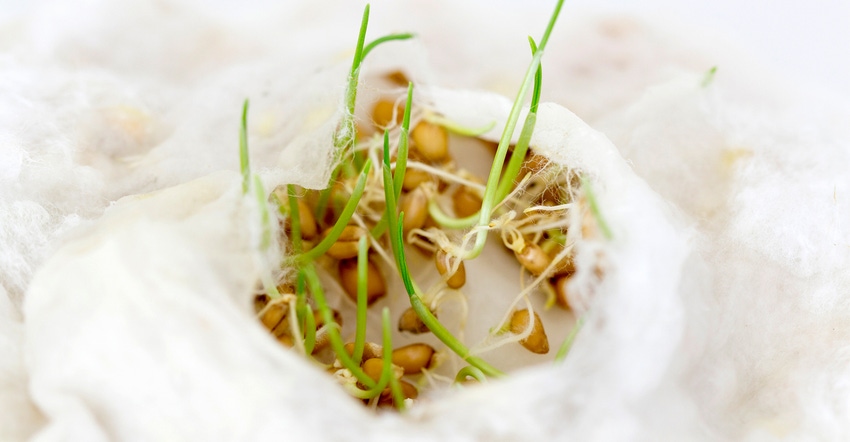July 27, 2021

The 2021 wheat crop had a conducive environment for the development of fusarium head blight (head scab) in many areas of Kansas.
Fusarium head blight is a fungal disease that affects developing grain. Farmers might have noticed large tan lesions over large portions of the developing wheat head in their fields earlier this season. Some may have noticed wheat kernels that were white and chalky this harvest, instead of a more healthy amber color. Diseased grain can also be shriveled with a poor test weight.
As farmers prepare for fall wheat planting, they should be aware of the source of their wheat seed. Fusarium can reduce germination dramatically in some cases, as well as make reading and understanding a germination test much more difficult. Having your seed professionally tested for germination is always a good practice, but in this instance it is highly recommended.
To have an official germination test on the seed, send a 2-pound sample to: Kansas Crop Improvement Association, 2000 Kimball Ave., Manhattan, KS 66502. A germination test will cost $19, and a sample submittal form can be printed from the KCIA website at kscrop.org/seed-lab.html.
Home testing
If producers want to test their seed for germination at home, it needs to be done correctly to be of value. The following detailed procedure is taken (and slightly modified) from Kansas State University Extension publication AF-82, Seed Germination Test Methods.
1. Place two moistened paper towels on top of each other on a flat surface. The towels should not have free water in them.
2. Arrange fifty (50) seeds on the towels, leaving approximately a 1-inch border around the edges.
3. Place two more moistened towels over the seeds.
4. Make a ½- to ¾-inch fold at the bottom of the four paper towels. This will keep the seed from falling out.
5. Starting on one side, loosely roll the paper towels toward the other side (like rolling up a rug) and place a rubber band around the roll(s).
6. Place the roll in a plastic bag. Seal — but not completely — so as to keep moisture in but still allow some air into the bag.
For newly harvested seed, place the bag upright in the refrigerator for five days, and then remove and place it upright at room temperature for an additional five to seven days. Remove the sample from the bag and unroll the towels. Count and record the number of healthy seedlings that show adequate root and shoot development and are not overtaken by disease.
For carryover seed, or after Sept. 1, place the bag upright at room temperature for five to seven days. Remove the sample from the bag and unroll the towels. Count and record the number of healthy seedlings.
Germination percentage
To calculate the germination percentage: Divide the number of healthy seedlings by the number of seed tested and multiply by 100.
This may be repeated more times for each sample in order to obtain more accurate results, testing up to 400 seeds.
Source: Kansas State Department of Agronomy and the Kansas Crop Improvement Association are solely responsible for the information provided and is wholly owned by the source. Informa Business Media and all its subsidiaries are not responsible for any of the content contained in this information asset.
You May Also Like




